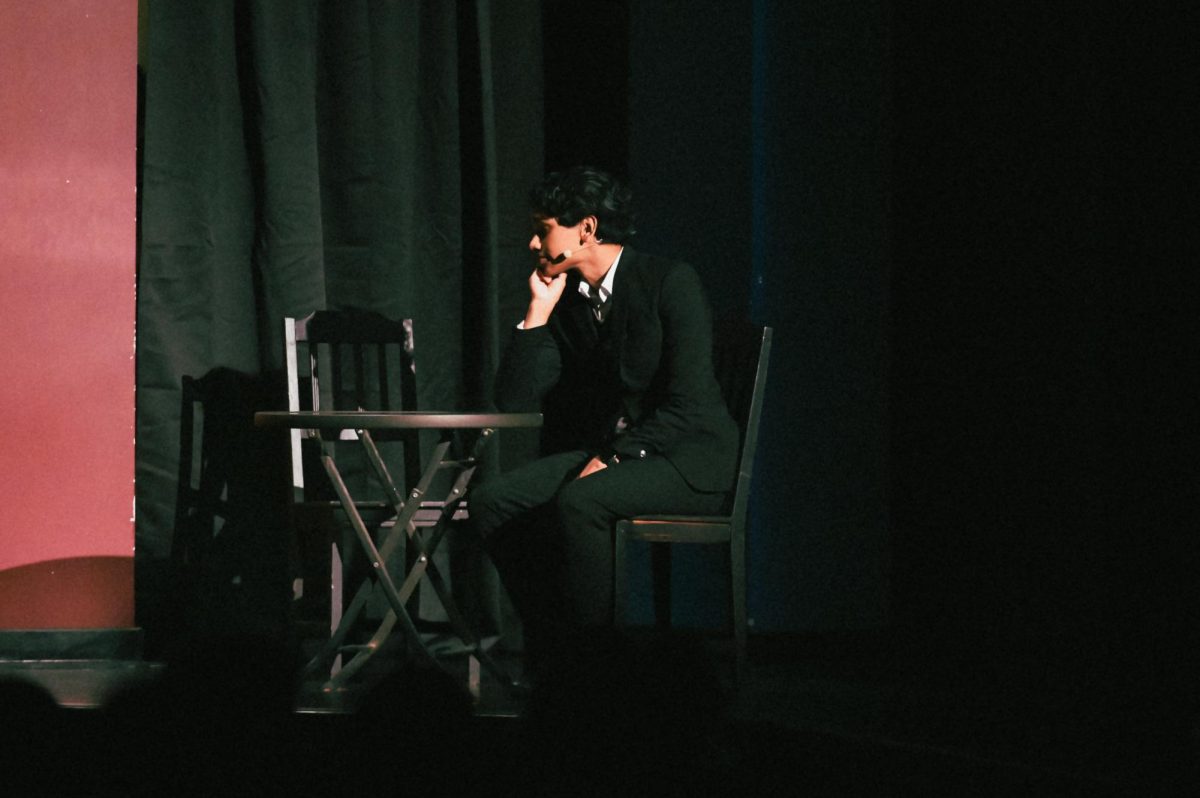As the SCHS theater department’s new musical, “Legally Blonde,” takes the stage, the iconic character Elle Woods is introduced to the audience. “Legally Blonde,” which ran from April 3-6, focuses on Woods, who transforms into a Harvard Law graduate from a fashion-obsessed sorority girl. A motif featured throughout the musical is the way the main characters challenge or uphold traditional gender expectations.
Female expectations are seen early in the musical, specifically through characters like Vivienne Kensington, who is engaged to Woods’ ex-boyfriend, Warner Huntington III. In the first half of the musical, Kensington strongly dislikes Woods and is seen as one of the antagonists, reflecting how women are often expected to compete with one another rather than support each other in a male-dominated field.
While Kensington’s character is often looked down upon because of her stubborn nature, senior Janae Ruwethin, who plays her in the musical, believes Kensington acts that way because she has to break societal expectations in order to be respected.
“The reason why she chooses to judge Elle is because she knows, as a woman, what it’s like to be in that male-dominated field, so that’s why she is so mean to her,” Ruwethin said. “She feels like to be able to be successful as a lawyer, she has to push away femininity and try to be more stern and more like a stereotypical male figure.”
Woods is portrayed as feminine, constantly sporting pink and bouncy blonde hair with freshly manicured nails. The hyper-feminine woman is often not taken seriously, seen through constant belittlement by her peers. Woods challenges this stereotype by becoming a Harvard Law student.
Woods initially applies to win Huntington back and to show him she is just as serious as his new fiancée. After realizing that Warner is not worth her time, however, she decides to stay in law school, determined to prove everyone wrong and show others that she is capable of achieving her goals.
Senior Lara Holzhaus plays Paulette Bonafonté, Elle’s close friend in the musical. She believes “Legally Blonde” serves as a feminist piece.
“It’s (‘Legally Blonde’) literally about a woman trying to go to school. It’s not the main focus for her to fall in love – it’s for her to prove that she doesn’t need a man and that she can do whatever she wants. I’d say it’s more feminist,” Holzhaus said.
Male characters like Professor Callahan and Huntington also uphold traditional gender expectations throughout the play. Junior Nathan Rodriguez Calixto believes his character, Huntington, is a perfect example of a traditional male.
“Warner and Elle’s relationship is very stereotypical. The guy is successful. The girl’s hot. They’re the perfect match that fits very traditionally into gender roles,” Rodriguez Calixto said.
Playing into their male stereotypes, both Callahan and Huntington do not take Woods’ capabilities seriously. Callahan also fits the traditional male villain stereotype by attempting to pursue Woods romantically, despite her lack of interest.
Senior Ryan Song described his character, Callahan, as a typical manipulative predator.
“Callahan kind of falls into the typical teacher-student relationship dynamic, where it’s toxic and the teacher obviously manipulates the student, but Elle doesn’t fall for that,” Song said. “I do think Callahan is pretty traditional for a villain role. A lot of the time, when you see a role like this, usually the man is portraying it, and the man is usually the creep in the situation, so I would say, yeah, he follows the villain role pretty well.”
While some characters, like Huntington, stick to more traditional male roles, others, like Emmett Richmond, break away from the expectations. In the song “Take It Like a Man” from the original play, Woods teaches Richmond how to act more confidently and gives him a makeover, flipping the typical gender roles.
Rodriguez Calixto believes that by the end of the musical, there are powerful moments that shift the audience’s focus. In the courtroom, for example, the lawyers are all women. Woods and the women around her become powerful forces by embracing every part of themselves and breaking free from traditional expectations.
“An important part of the scene in ‘Legally Blonde’ is the court scene, where it’s the entire women’s staff – Enid, Elle, Vivienne, just all representing. It’s an important breaking of tradition and typical gender roles,” Rodriguez Calixto said.
Ruwethin believes the musical emphasizes that both women and men can defy societal norms and achieve their personal goals by staying true to who they are.
“‘Legally Blonde’ can serve as a really important representation of a non-traditional woman because she (Woods) goes from framing her life around a man to going into a male-dominated field,” Ruwethin said.


